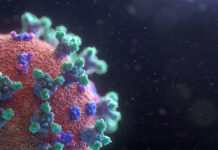“Enough is enough” seems to be the rallying cry of people ready to throw in the towel when it comes to lockdowns and stay-home orders. When the Wisconsin Supreme Court struck down the state’s extended stay-home order, bars filled up within hours. According to the New York Post, “COVID-be damned” New Yorkers turned the beaches, boardwalks and sidewalks outside bars into a “raucous, late-season Mardi Gras.”
Elsewhere, protests continues and resentment rises as states crack down on salon owners and other small business owners who simply want to get back to work and make a living. People are breaking out of quarantine, regardless of the consequences.
Maybe people are beginning to realize that we cannot stop COVID-19. According to some, we never should have tried.
Will there be a Second Wave?
Concurrent with the breakouts, beach outings, and protests, the World health Organization (WHO) is warning about a second wave in the fall, which could be more deadly than the first wave. In the United States, governors and health officials seem to be more worried about a more immediate second wave, or perhaps a second peak of the current wave, caused by what they consider premature lifting of stay-home orders and a lack of social distancing.
Maybe we all just need to calm down and realize that coronavirus is going to be with us for a long time and we need to learn to live with it, much like we live with the flu.
Vaccine Hopes Rise
The COVID-19 vaccine from Moderna that is in early clinical trials has reportedly produced antibodies in all 45 patients in the Stage I trial. While this is very good news, the presence of antibodies does not necessarily mean it prevents recipients from getting COVID-19. It should, but that has not yet been tested.
I have worked in the pharmaceutical industry and know from personal experience that drug development candidates that do well in Phase I trials can and often do fail in Phase II or Phase III trials, each of which include more and more patients. Until tested for efficacy, which is usually done head-to-head with another therapy or vs a placebo, we won’t know if this candidate actually performs. It is still possible that when tested in 5,000 people the vaccine will show no statistically significant benefit in preventing people from getting COVID-19.
Also, this test was in people 18 to 55-years-old, while the disease is most dangerous to people in their 70s and 80s. I would hope that a future trial tests the efficacy of the vaccine on the patient population in most need of protection.
While this is early trial is a positive and encouraging sign, it’s no guarantee. It is also too early to determine what, if any, long term side effects might exist.







